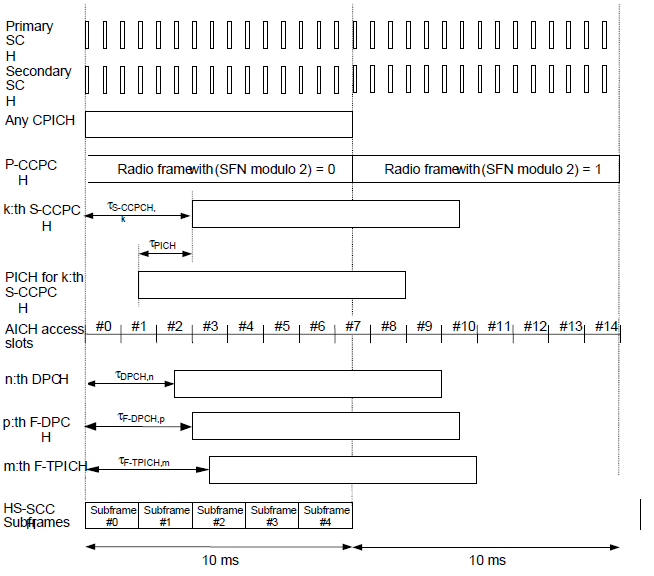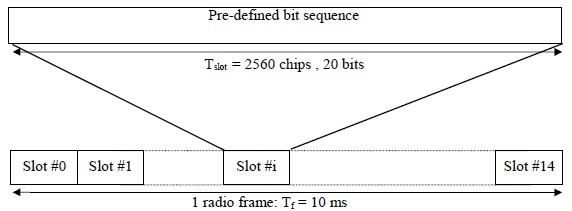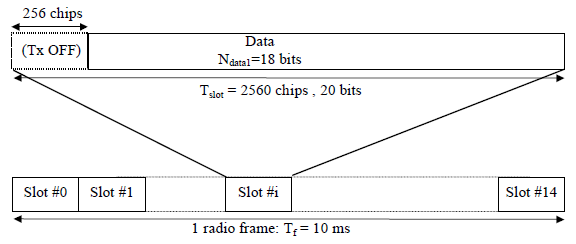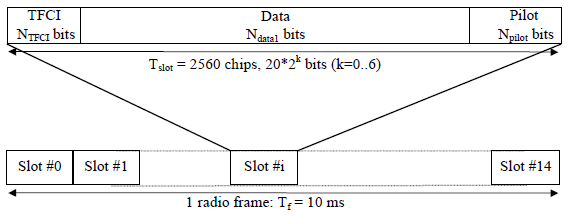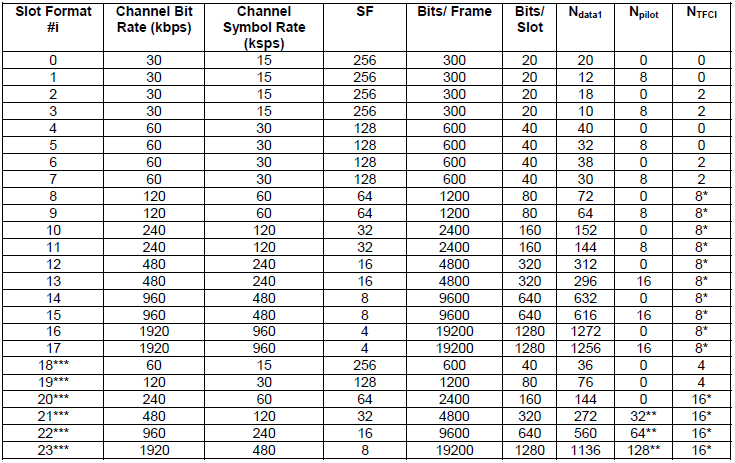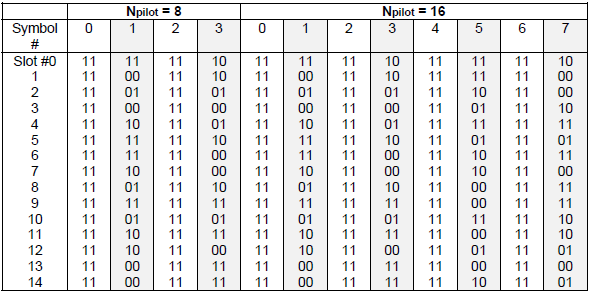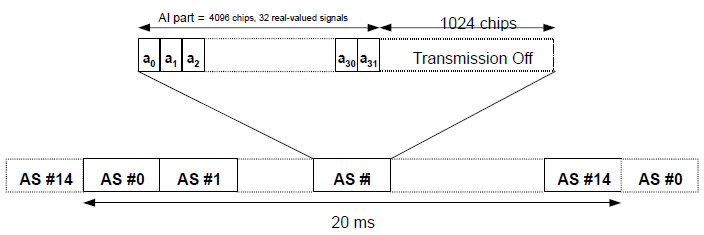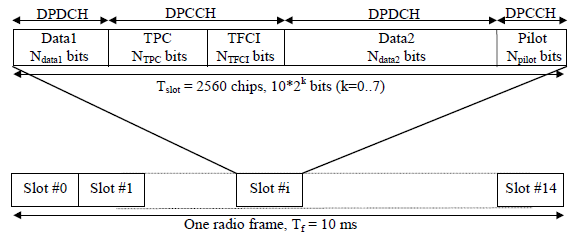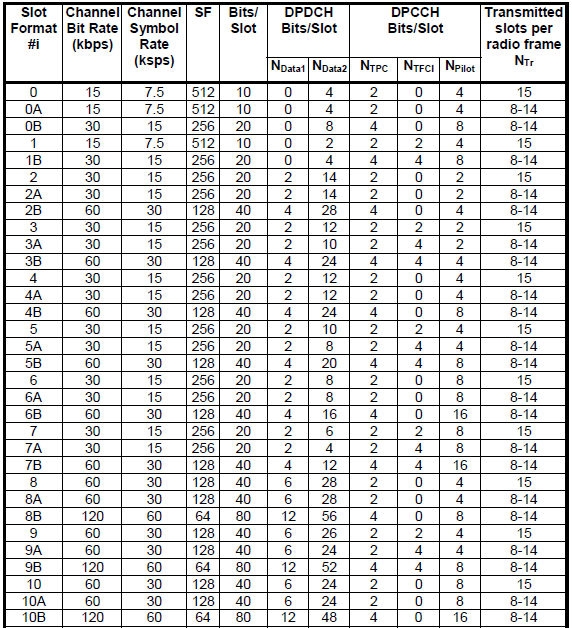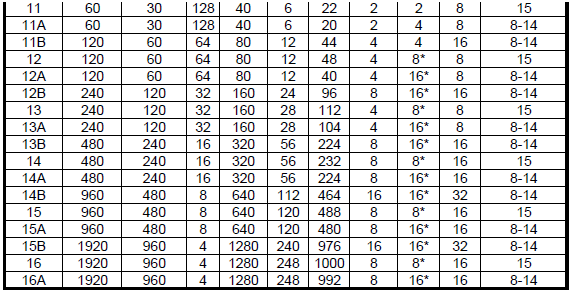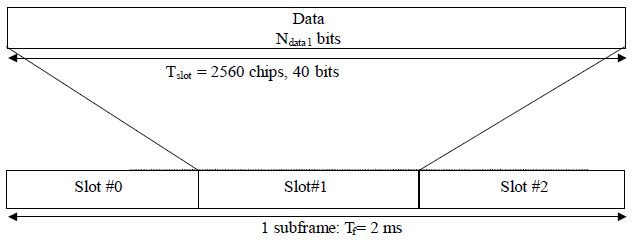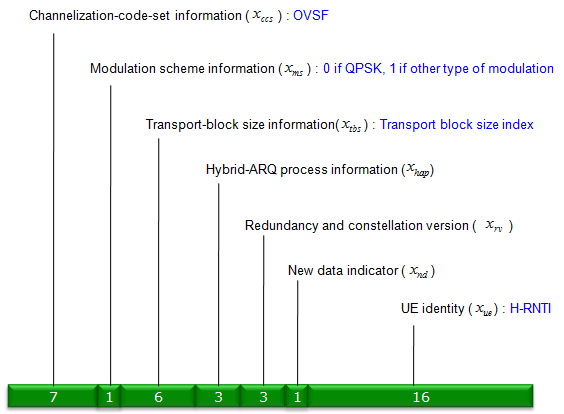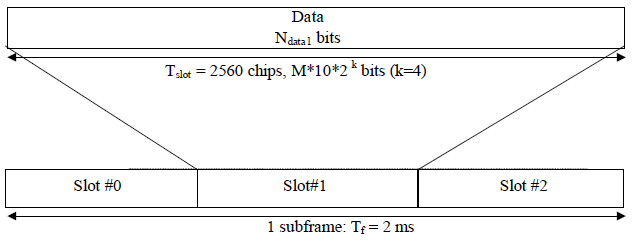|
3G/UMTS |
||
|
Frame Structure and Physical Channel - Downlink
Overall Timing relationship among physical channels
< 25.211 - Figure 29: Radio frame timing and access slot timing of downlink physical channels >
< 25.211 - Figure 18: Structure of Synchronisation Channel (SCH) >
< Primary SCH >
< Secondary SCH >
< 25.211 - Figure 13: Frame structure for Common Pilot Channel >
< P-CPICH(Primary CPICH) >
< S-CPICH(Secondary CPICH) >
P-CCPCH(Primary Common Control Physical Channel)
< 25.211 - Figure 15: Frame structure for Primary Common Control Physical Channel >
S-CCPCH (Secondary Common Control Physical Channel)
< 25.211 - Figure 17: Frame structure for Secondary Common Control Physical Channel >
< 25.211 - Table 18: Secondary CCPCH fields >
< 25.211 - Table 19: Pilot Symbol Pattern >
AICH(Acquisition Indicator Channel)
< 25.211 - Figure 21: Structure of Acquisition Indicator Channel (AICH) >
DPCH(Dedicated downlink physical channels)
< 25.211 - Figure 9: Frame structure for downlink DPCH >
HS-SCCH(HS Shared Control Channel)
HS-SCCH is to carry the control information for HS-PDSCH and it has fixed rate of 60 kbps and spreading factor of 128.
<25.211-Figure 26A: Subframe structure for the HS-SCCH >
HS-SCCH Type 1 which is normally used for HSDPA in non-MIMO configuration has structure as shown below (See 25.212 4.6 Coding for HS-SCCH type 1 for details)
HS-PDSCH (High Speed Physical Downlink Shared Channel)
HS-PDSCH is the physical downlink channel that carries HSDPA user data. One HS-PDSCH corresponds to one channelization code of SF(Spreading Factor) 16. Depending on UE capability, multiple HS-PDSCH (i.e, multiple channelization code) can be transmitted simultaneously.
The frame structure of HS-PDSCH is shown below. The modulation scheme for this channel can be QPSK, 16 QAM, 64 QAM. Depending the modulation scheme, M in the following diagram varies. That is, M becomes 2 when the modulcation scheme is QPSK, it becomes 4 for 16 QAM and it become 6 for 64QAM.
< 25.211-Figure 26B: Subframe structure for the HS-PDSCH >
The slot format for HS-DPSCH (i.e, Data field) are as shown below.
< 25.211-Table 26: HS-DSCH fields >
|
||
